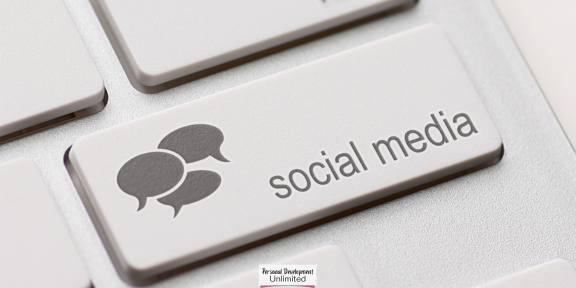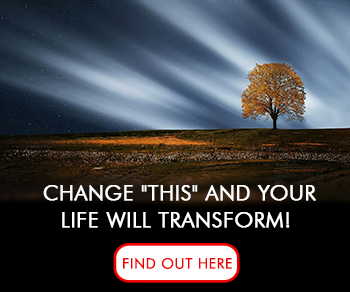Do you take your phone to bed with you?
Do you spend the first 30 minutes of your morning scrolling your Instagram feed?
And most importantly, do you feel guilty about your social media usage?
You might need a social media detox.
But I’m getting ahead of myself. Let’s set some context first.
The Issue With Social Media
Social media has been around since the early 2000s. Millennials reading this piece will recall the early days of MySpace and Orkut. Soon enough, by the late 2000s and early 2010s, Facebook and Twitter had taken over.
And they were hiring the brightest minds in the world to create increasingly addictive applications – applications designed to appeal to our primal instincts (shiny buttons, beautiful people, endless fun things to look at).
It started with the (now ubiquitous) like button – a seemingly innocuous tool that helps their algorithm determine user preferences. Then came the infinite scrolling – once you had seen all your friends’ food photos or vacation shots, you would be presented with a series of algorithm-approved posts according to your preferences (that like button was helping!).
Then came reels – the perfect solution for our shortening attention spans. The concept was based on slot machines, as this article sums up.
There are other claims with mounting evidence against Meta-owned Instagram: the Wall Street Journal reported in 2021 that the effect of Instagram-filtered pictures on mentally vulnerable teenagers had been discussed (in internal presentations) and downplayed (in public); by Meta.
Well then, why aren’t we talking about complete abstinence? Why a 30-day social media detox?
The Good Side
Social media has tons of benefits. Instagram For Business, for example, has helped small businesses connect to the right clientele. Many fantastic creators have gained international fame for their art, music, activism, and specialized knowledge.
We live in a more connected world than ever before. Something easy to take for granted – where we can have an enriching, uplifting conversation with a kindred spirit thousands of miles away. And it’s free.
Most significantly, Meta has been instrumental during crises, using their data to help people and governments respond to natural disasters and disease.
Benefits of a Social Media Detox
A social media detox helps you answer an important question: why am I using social media?
We all want to use social media mindfully and in a controlled way that aligns with our values. A tall order when you’ve just shared an angry rant on Facebook and are endlessly scrolling Instagram (trust me, I’ve been there!).
A social media detox will help you take some space, understand your “why”, and ultimately return to social media to use it beneficially.

How to Do a Social Media Detox – Step by Step
A couple of years ago, I was drowning in social media noise – hateful viral content on Facebook, endless reels on Instagram, and obsessive posting and like-checking. I was over-stimulated, anxious, and miserable. I made multiple attempts to kick my social media habit – and failed miserably each time. My mental health was in shambles.
Then I read a brilliant book called Digital Minimalism: Choosing a Focused Life in a Noisy World by Cal Newport. It took me two deep reading sessions, and quite a bit of introspection to implement his strategies.
I realized that my cycle of guilt-ridden doom-scrolling could be curbed only through proven techniques and a mindset shift. After all, as Cal emphasizes: compulsive social media use is a deliberate construct by tech giants, and not an individual failure to employ time meaningfully.
Step 1: Commit to the Challenge
For the true social media addicts, (no shame: I was too!) quitting social media cold turkey can be next to impossible – that primal part of your brain will keep making you crave those highs.
The first step is convincing your brain that you need to do this.
Understand the psychology behind social media addiction. You can read the book I just mentioned, and if you’re a visual learner – watch this excellent YouTube clip of Stanford neuroscientist Dr. Andrew Huberman explaining how the instantaneous dopamine hits keep people returning to social media.
Read about how your brain’s instincts have been weaponized, by multi-billion dollar companies, to work against you.
Stay on this step for as long as you need to. Take a pen and paper and write down how social media makes you feel, and why you need to take a break from the hedonic treadmill.
Do: Educate yourself a bit on social media and psychology
Don’t: Jump into the challenge without thought
Step 2: Define Your Rules
Okay, now you’ve committed to the 30-day social media cleanse. The next step is to write down your specific social media rules.
Here, you take a list of “optional” apps that you could delete for a month without significantly disrupting your life.
Facebook, Instagram, and Twitter might be no-brainers. But wait, what if you use Twitter to network with clients? What if you’re job hunting and you need LinkedIn to InMail recruiters?
Hence, rules.
I can give you an easy template to follow: delete all apps from your phone, and only check them at specific times of the day or week, from your computer.
Let’s say you need LinkedIn to network. So, you decide to check it once every day from your computer, for a maximum of 30 minutes.
Write down your specific rules and keep them on display at home.
Another idea is to include all apps that you tend to overuse. Netflix may not count as social media, but the app can be as addictive, and the same rules can be applied to it. If you want to watch a show, you can watch it on your TV for an hour each day (for example) – not on your phone, whenever you want.
The idea is to prune as much technology as you realistically can.
Do: Create specific rules and tape them to your fridge/near your workstation
Don’t: Impulsively ban all apps without considering the consequences
Step 3: Have an Accountability Partner
We always function better when we have a trusted friend, partner, or spouse holding us accountable (firmly, but with compassion).
Ask a buddy to help you navigate this challenge. You can come up with a list of rules together. For example, sign out from all your devices and delete your saved passwords. Formulate a rule wherein you can only check your socials from their devices (as an example – you don’t HAVE to do this!), at specific times. If you slip up, let them know and go back to the challenge – don’t give up!
Do: Recruit a trusted buddy, if possible
Don’t: Despair if you don’t find a buddy! You got this, even if you’re doing it on your own.
Step 4: Schedule High-Quality Activities
Taking away social media can give you a huge chunk of free time every day. Suddenly, there will be no distractions from your thoughts, and uncomfortable emotions will demand to be felt. While it is necessary to sit with these thoughts and feelings, partaking in strenuous, high-quality activities will be beneficial.
“You want to […] rediscover the type of activities that generate real satisfaction, […] to confidently craft a better life—one in which technology serves only a supporting role for more meaningful ends”.
Cal Newport, from his book Digital Minimalism (released in 2019)
Do you enjoy building tools with your hands? Or are you an artist at heart? Whichever it is, rediscover the pursuit of activities that lead to a slow, steady dopamine release. Schedule workshops over the weekends.
Another way to disconnect from socials is to reconnect socially. Make plans with friends, host a potluck, and call people you’ve been meaning to catch up with.
Do: Make enjoyable, attainable plans
Don’t: Cram your schedule – your 30-day social media detox challenge needs activity, as well as introspection!
Step 5: Take 30 days Off
We’re in The Bad Place now.
(But if you’ve watched The Good Place, you’ll realize that it was important for Eleanor, Chidi, Tahani, and Jason to fight their demons in The Bad Place to win their way to The Good Place.)
Those first two weeks will be hard, and you may experience withdrawal symptoms. You might even end up breaking a rule or two – acknowledge the miss, and go back to your challenge immediately.
Accept the discomfort and frustration, and if it feels like a lot, talk to a trusted friend, or a therapist. A lot of mental health issues lurk beneath social media addiction.
The uncomfortable feelings should become less intense by week 3.
Do: Stick to the challenge as much as possible
Don’t: Be self-critical. Guilting yourself on one or two slip-ups may make you end up spiraling and abandoning the challenge altogether!
Step 6: Reintroduce Technology Mindfully
At the end of your 30-day social media detox, you are now ready to reintroduce social media with mindfulness and intention.
For each application, ask yourself the following questions:
- Does this app support something I value deeply?
- Is it the best way to support my values?
- How can I use it to minimize harm and maximize value?
For instance, the reason I used Instagram was to follow and support the work of certain creators and local businesses. The downside was getting sucked into endless scrolling and reels.
Another problem? My friends were also constantly sharing reels over Insta DMs. I’d open the app and get sucked into a black hole of scrolling.
I laid down the following rules for Instagram:
- I was to check it only from a computer, for a limited time a week
- I would not touch the reels button, or open any DMs
I’ve observed over the months, my urge to check Instagram has vanished – I occasionally open it to contact or order from Insta shops, and immediately close the tab.
Repeat this exercise, one by one, for each technology you re-introduce. The goal is to build your app stack from scratch, with a set of rules, in a way that saves your time and mental health.
Another pro tip? Never save passwords on Google or your Apple Keychain. The act of re-entering your password each time is an automatic deterrent. It is why I haven’t opened Facebook in 3 years – I can’t remember my password, and resetting it is the right amount of friction to help me abstain!
Do: Write down your new social media rules in a visible location
Don’t: Plunge yourself head first into all your apps and go on a binge-fest
Step 7: Craft a Life Where Social Media Plays a Supporting Role
If the 30-day social media detox is about introspection, the period after that is for implementation.
Newport writes about 3 ways to do this – spend time alone, don’t click “like”, and reclaim quality leisure.
Spend Time Alone
Ever since the advent of the iPod and iPhone, the need to be alone with our thoughts has seldom arisen.
And yet, neuroscientists insist that boredom is good for your brain’s health (read this Forbes article). I’ve found solace through guided meditation, long walks without my phone, and simply sitting in silence.
Don’t Click “Like”
This adage was coined by Newport to explain that innocuous social media behaviors such as “liking” posts may seem harmless, but are stealing joy from our lives.
The act of clicking “like” (or receiving a “like”) may give us a temporary boost of happy hormones, but it cannot come close to the joy of meeting a cousin’s new baby, or a family reunion.
Reclaim Quality Leisure
We live in a world where productivity trumps leisure and relaxation. But quality leisure time can give our brains the rest they need, and even enhance productivity.
As a knowledge worker, a long day of mental labor leaves me exhausted – mentally, not physically. In such a situation it is incredibly tempting to flop down in front of the TV or browse reels for a few minutes (that turns into hours).
The trick is to plan for these situations well in advance and swap these low-quality, passive leisure activities for better things. At the end of a long workday, I typically go on a long walk – physical activity after mental labor leaves me refreshed.
Rule of thumb: if you are doing mentally taxing work during your workweek, schedule time for physically demanding activities – yoga, dancing, hiking, woodwork; the possibilities are endless. Alternatively, for those of you doing hard manual work, a good way to unwind is through mentally challenging yourself – reading a book, taking an art class, or learning a language.
Do: Take small, attainable steps. It took me around 2 years of back and forth to reach a place where I feel in control of my social media usage, and yet have occasional days when I spend hours and hours on my phone.
Don’t: Set unrealistic expectations. Being a digital minimalist is a long and complex journey.

Conclusion
A social media detox for 30 days is a step towards reclaiming control of your life. It is not the end-all of the discussion surrounding digital minimalism.
A social media break must be supplemented by deep thought and introspection on crafting a better life based on our values.
Following the framework provided can help you understand your underlying unmet needs while giving your brain a rest from information overload and constant stimulation. It can ultimately be the first step in breaking a cycle of impulsive behaviors that are impacting the quality of your life.

Arundhati Sarkar
Arundhati is a Data Analytics Consultant, minimalism enthusiast, and travel blogger - she shares travel itineraries, money-saving hacks, and travel checklists on her website: ArundhatiSarkar.com.
Comments
0 comments



